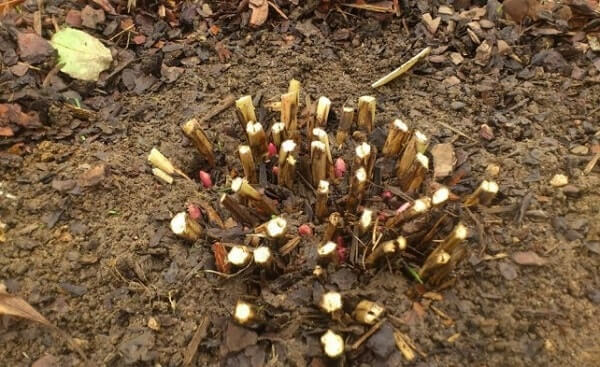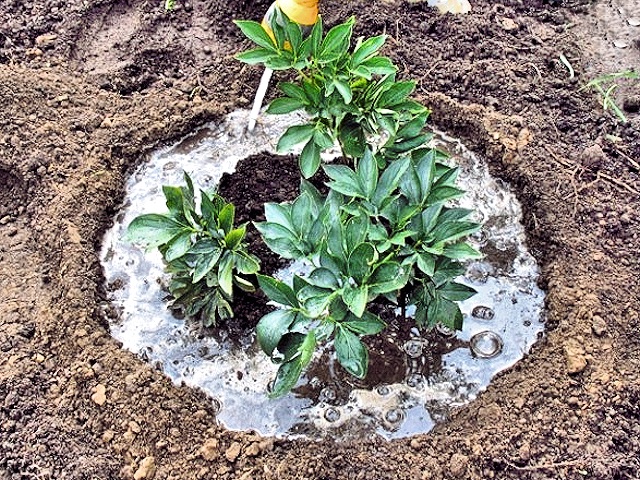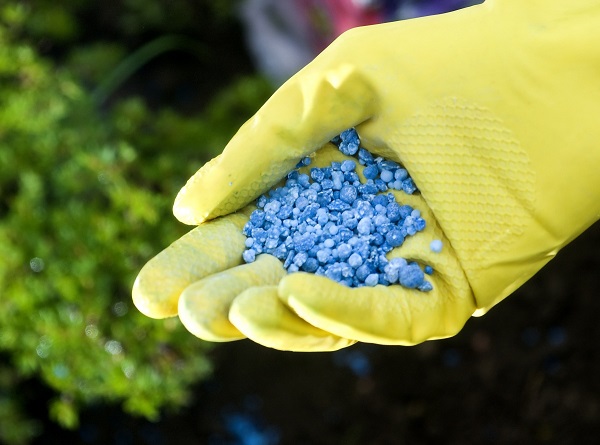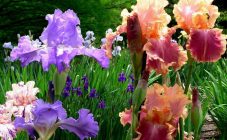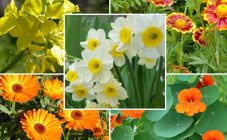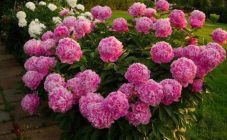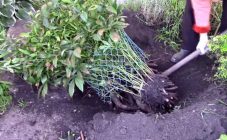Content:
Pruning peonies is a rather troublesome, but necessary procedure. Plants do not bloom well without it and often die during the winter. But after all, every summer resident dreams of a peony to bloom debt, beautifully, intensively. For this, the plant needs proper care, including pruning. Compliance with some rules will help grow healthy and strong flowers.
When to prune peonies after flowering
Not everyone knows when to cut peonies (I don't mean flowers, but leaves and branches). You need to prune peonies only after making sure that they have faded. This is usually done in the fall. It may seem best to prune in the spring when the plant is just getting ready to bloom. However, this is a misconception. Pruning of peonies is carried out only in the fall. When choosing a deadline for performing this procedure, you need to keep in mind the following:
- Don't rush to trim. If you spend it in the first or second decade of September, the plant will weaken, and the natural process of photosynthesis will also be disrupted. Then it will no longer be possible to qualitatively prepare the plant for winter.
- It is best to wait until late autumn, when frosts will cease to be a one-time phenomenon and become permanent. At this time, the plant enters a period of physiological dormancy, and pruning will not do it any harm.
- In Central Russia, pruning is usually carried out in the first decade of November, in more northern regions - in the last decade of October.
- It happens that the flower dries up ahead of time due to diseases or pests. In this case, you should not focus on the appearance of the plant, planning the timing of pruning. It is carried out as usual, without shifting it to an earlier date.
Experienced growers, looking at a peony, "by eye" determine its condition and begin the procedure just when the flower begins to prepare for hibernation. This "flair" comes with experience. If a novice summer resident does not know when to start preparing a plant for winter (including pruning), you can consult with more experienced growers. First of all, varieties grown in Siberia and the Urals need to be prepared for wintering, and in the southern regions you can not rush to do this. You can read about approximate dates in specialized literature and country calendars.
A timely performed procedure will help the plant to easily survive the most severe cold. And, on the contrary, late or too early pruning will so weaken the vitality of the flower that it does not survive even the warmest and snowiest winter. Statistics say that in winter, peonies most often die precisely because of untimely pruning.
Peonies have faded: what to do with them next
When the peonies have faded, any summer resident's calendar will tell you what to do. In the column "autumn" there will be activities to prepare for the winter, including pruning. Removing the tops is a rather complex procedure that requires certain skills. When the peonies have faded, it's time to sharpen the secateurs for this manipulation. During the procedure, the following rules must be observed:
- It is necessary to carry out pruning only with a sharply sharpened pruner, preferably in protective gloves, so as not to accidentally damage your hands with pointed dried branches. No need to bend and break plant stems. In general, you should not use brute force during pruning.
- All waste remaining after pruning is burned, since the branches can be affected by dangerous diseases and pests. Therefore, do not put foliage on the compost heap. Even from one leaf, a neighboring bush can become infected with a dangerous infection. Diseased shoots are cut off first.
- Only that part of the plant that is above the ground needs to be removed. It will be correct not to cut everything to the root, but to leave at least small "hemp". If the roots are accidentally damaged, the flower may die and not survive the winter. Peony is a plant with very sensitive and delicate roots.
- The stems above the growth buds are not cut off if their length is up to 5 cm.
- You cannot use cut foliage as a shelter for the winter, otherwise harmful insects will flock to them. If you neglect this rule, the procedure will only bring harm instead of benefit.
- Places of cuts and the ground around the flower can be sprinkled with ash. It is rich in potassium, and also repels dangerous pests from the peony and disinfects the soil. This must be done, the main thing is to prepare the ash in advance. It can be obtained by burning garden waste and then sieving through a fine mesh sieve.
Mistakes of novice florists
Seeing peonies after flowering, the summer resident thinks about what to do next. Further, according to the plan, feeding and pruning are, but these activities are not as simple as they seem. When caring for a peony, novice growers often make gross mistakes that negatively affect the growth and development of flowers.
- Insufficient watering after pruning. Peonies love moisture very much. If the soil around the plant is even a little dry, the peony may simply not bloom, or the flowering will be lethargic, and the flowers will be deformed and small.
- Top dressing with undiluted mullein. Mullein is an indispensable fertilizer for those who work in the garden, but they need to be used “wisely”. This organic fertilizer must be diluted with water, otherwise you can burn the peony roots.
- Cutting off inflorescences that have not yet faded. If you do this, next year the flowering will not be as intense.
- Use when working with a blunt garden tool. Practice shows that it is much easier to injure yourself with a blunt instrument than with a sharp one. In addition, if the pruner is blunt, the branches of the plant can be injured.
- Late pruning just before winter begins. In this case, the plant will not have time to adapt to the cold, and the root system may become infected with a fungus. If the summer resident sees that he is clearly late with pruning, it is better not to prune the flowers at all. There is no need to rush to prune peonies at the end of summer. If the grower does not know when to prune peonies in a particular region, it is better to consult with neighbors in the area.
In no case should you repeat such mistakes. As practice shows, it is they that most often lead to the death of peonies in winter. With improper preparation for the cold season, even a tree flower will not survive the relatively mild winter of the Middle Lane.
Top dressing after flowering
Peonies come in a variety of colors, but all are equally pleasing to the eye. The most popular varieties among Russian summer residents are white and pink. But for the peonies to look really beautiful, the plant must be healthy and strong. When the period of intense flowering is over, the plants need abundant feeding in order to make up for the deficiency of nutrients. Here are the basic rules for feeding peonies:
- Feeding is necessary only 3 years after the plants are transplanted.
- If the fall is rainy, it is best to use fertilizer in dry granules, so as not to cause excessive moisture in the soil.
- After dry dressing, loosening must be carried out, then the nutrients will quickly enter the soil and penetrate deeper inside.
- If rains are rare in the fall, you can safely apply liquid fertilizers to the soil.
- Top dressing in any form should in no case fall on the neck - the upper part of the root protruding above the ground.
The easiest way to buy industrial fertilizers is in the form of soluble tablets.
Peony transplant
Peony is a plant that needs replanting. If this procedure is neglected, the variety will gradually degenerate: the flowering period will be reduced, and the flowers will become smaller every year. The best option is to transplant at least once every 5 years.
- In regions with a cold climate, peonies are transplanted at the end of August. In areas with warm weather - in the first decade of September.
- Before transplanting, you need to moisten the soil at least a little. If the soil is dry, the plant may not take root in a new place.
- Do not perform this procedure in rainy and windy weather.
- When an old bush is dug up, you need to examine its root system. A plant with roots affected by fungi or pests cannot be transplanted. It will most likely die after this procedure.
- The old roots are immediately cut off and burned, and the young are placed in a weak solution of potassium permanganate for half an hour for disinfection. Only then can the transplant be carried out.
Thus, pruning peonies is one of the most important measures to prepare these plants for winter. After it, the flowers are covered, and the bush enters a period of physiological dormancy. The main thing is not to be late with pruning, so that the flower has time to adapt to the changing weather. In addition to this procedure, peonies need feeding in autumn. You can rejuvenate plants and get rid of dangerous diseases and pests with the help of timely transplantation of bushes to a new place.


